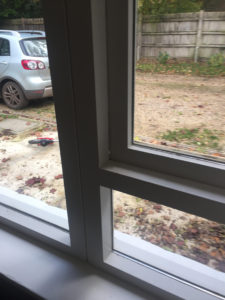The first thing to do is to inspect them visually, look for cracks and gaps round the frames, through the frames, through panels in doors, dark staining, cracks or gaps under sills or window boards, draughty trickle ventilators.

Check that the door or window shuts against its frame or draught strip. Often they don’t; doors can warp and so can plastic windows. We frequently adjust door keeps, window handles and sometimes have to heel and toe doors and windows and/or adjust keeps especially on French doors. There are a multiplicity of sealing strips available and this is not a one size fits all problem. We use small, medium and large rectangular foam strips, brush pile strips, E, P or D butyl rubber strips, all in brown or white. We also use nail or screw on plastic carriers with brush pile strips. Then seal the gaps with silicone outside and acrylic sealant inside. You may use good quality silicone inside between non wood and non plaster surfaces, otherwise use acrylic sealants.
For metal casement windows, please see this page.
For help with draught proofing, try this from Historic England relating to sliding sash window. Don’t forget to seal round the frame and architraves.
Re-sliding sash windows generally in excellent condition because a) set back into the reveal, b) surrounded by lime that sucks moisture away, c) draughty sash boxes help with this too (don’t let those draughts into the house though), d) unpainted sides of the side rails, e) unpainted underside of bottom rail traditionally, please keep this it is IMPORTANT, e) both bottom rail and sill have good falls to outside. f) good quality wood used in manufacture.
We do not recommend doing internal doors except to cold areas. Always check that the doors latch, lock and deadlock operate after strips have been applied.
In our opinion the guy below fitted the draught seal to the wrong part of the frame on the hinge side the strip should go on the part where the hinges are but otherwise quite useful:-
